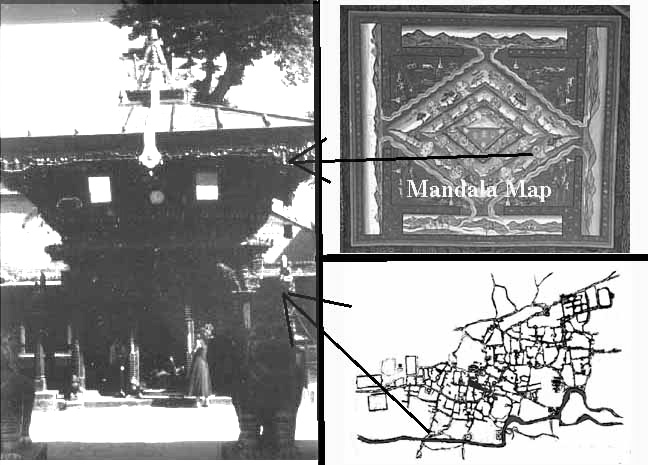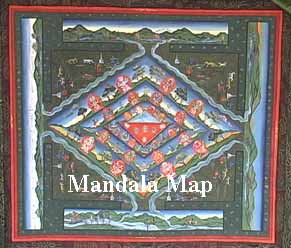Mandalization

At the simplest level, mandalization includes the cadastral recognition of the cardinal directions located on periphery with a focus on center. Within this basic structure, a configuration is made, which is generally constructed from a series of concentric circles and squares.
Over time, the Newars have physically marked out the valley with gods and temples and ritual routes, ordering its space to resemble more and more closely the structure of a mandala. In the basic matrix of the mandala , these gods‹ such as Bhaktapur¹s Piga(n) dya:s ‹map out the periphery and by so doing signify both a center and a bounded area of significance.

Accordingly, buildings, cities, and even the entire Kathmandu Valley are structured in the shape of a mandala (Gellner 190; Klover 1976; Bierener 118; Slusser 1998[1982]). As Todd Lewis writes, "The internal order of Newar house, courtyard, neighborhood, city, and Valley‹ideally integrated externally with excursions and internally through Dekka meditations‹has a mandala structure that orders and centers Newar life in many domains" (1984, 558).


